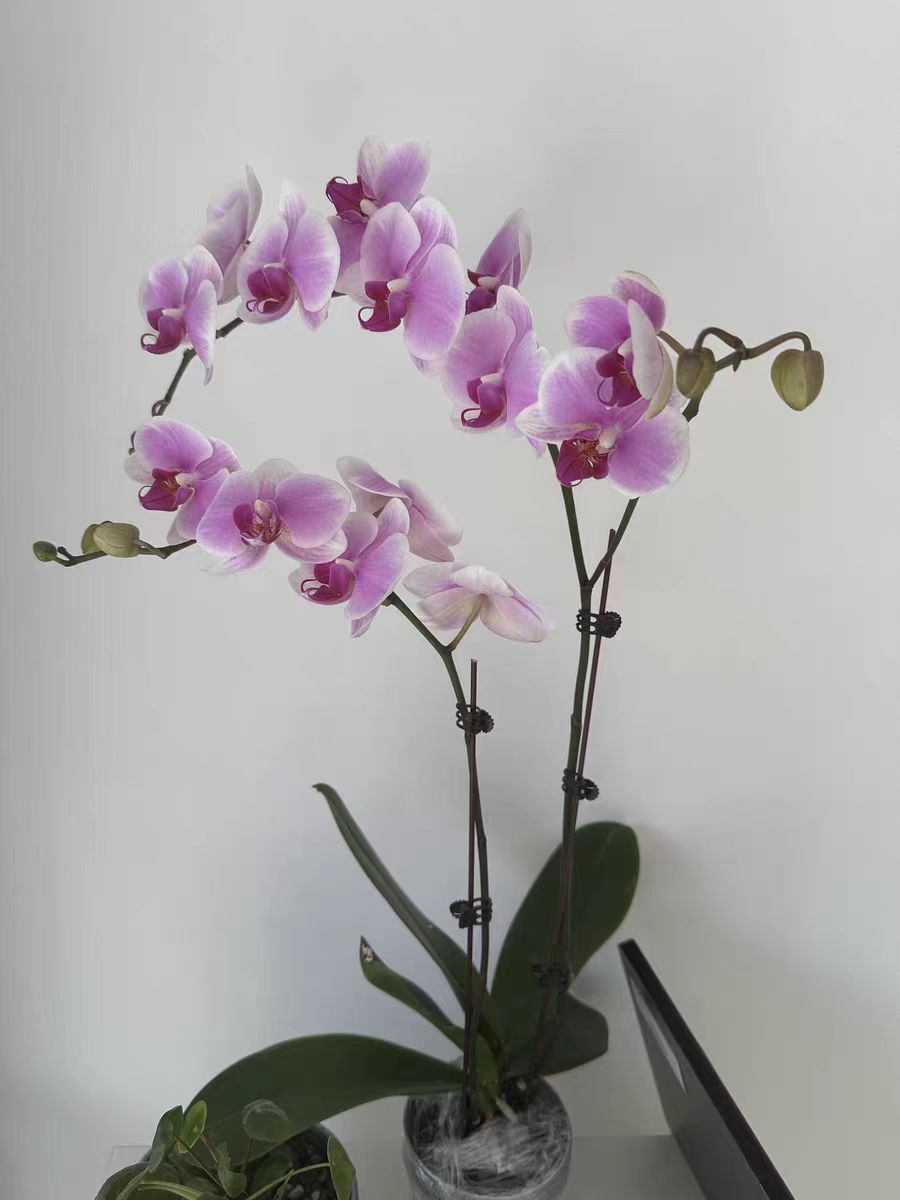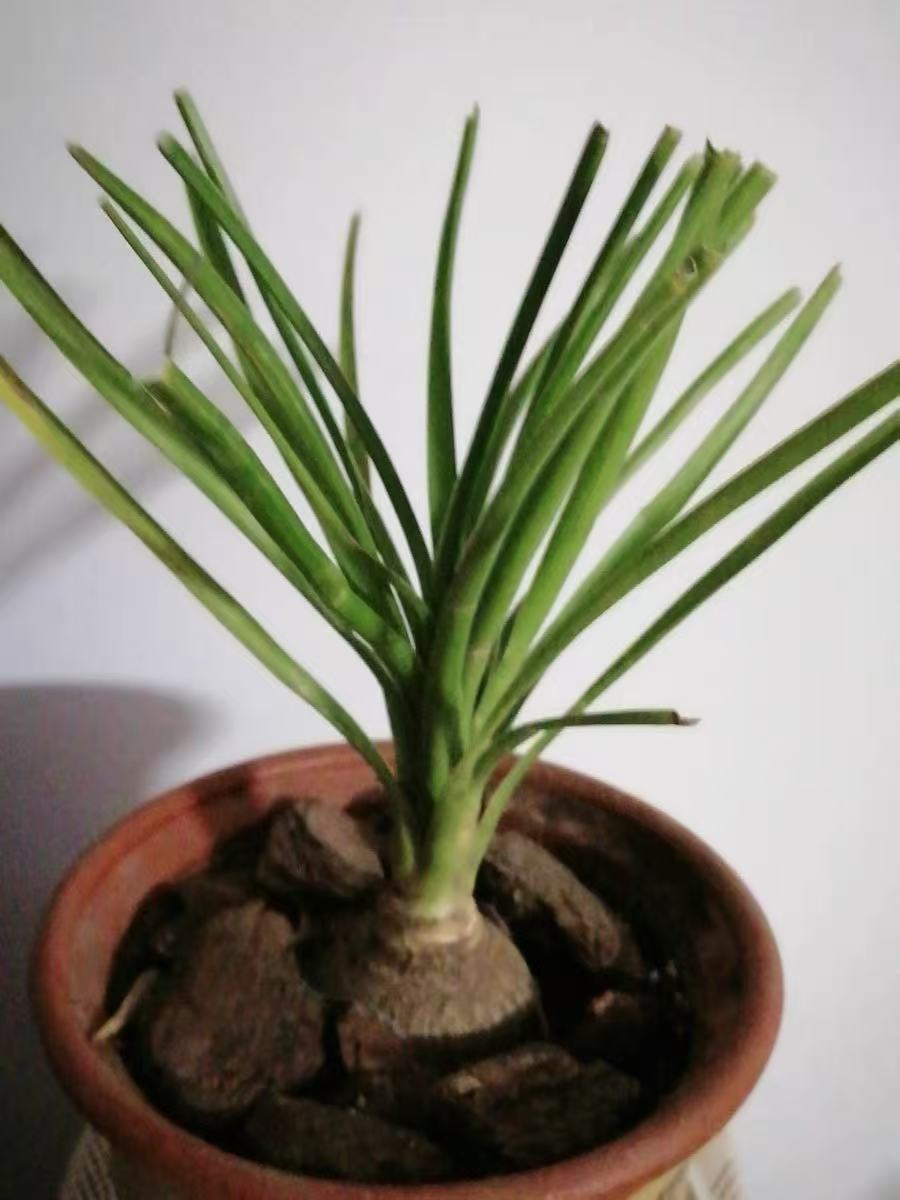In the process of Phalaenopsis cultivation, does it need to be divided for cultivation? Can the divided plants still bloom beautiful flowers? These questions are not only related to the reproduction and cultivation of Phalaenopsis, but also affect the expectations of every flower grower to harvest abundant flowers.
As an epiphytic orchid, Phalaenopsis often grows attached to tree trunks and rocks in natural environments, and its roots require sufficient space to stretch and breathe. Under artificial cultivation conditions, as the plant grows, its roots continue to expand. When the roots in the flower pot become too dense, the roots will entangle and squeeze each other. This will not only limit the growth of new roots, but also lead to poor root ventilation, affecting the absorption of water and nutrients. Division can separate the crowded plants, providing more spacious growth space for the roots, promoting the germination of new roots, and maintaining the healthy growth of the plants. For example, the roots of a Phalaenopsis that has been growing for 3 - 4 years may have filled the entire flower pot. Dividing it at this time will help relieve the growth pressure on the roots.
Division is one of the more common and effective reproduction methods for Phalaenopsis. Through division, the original single Phalaenopsis plant can be turned into multiple plants, expanding the cultivation scale without relying on seed reproduction. For flower enthusiasts and cultivation practitioners, this is a low - cost and high - success - rate reproduction method. Moreover, the new plants reproduced by division can inherit the excellent traits of the mother plant, such as the color and shape of the flowers, ensuring that the ornamental value of the new plants is consistent with that of the mother plant.
As Phalaenopsis grows, the plant shape may become messy, and some old and diseased leaves affect the overall appearance. When dividing the plant, it can be pruned and tidied up by removing the aging and diseased leaves and roots, and readjusting the plant layout. This can not only allow the newly divided Phalaenopsis to grow in a more graceful posture, but also enhance the overall ornamental value, making the potted plant look neater and more beautiful.
The timing of division has an important impact on the flowering of Phalaenopsis after division. It is generally recommended to divide the plant after the flowering period of Phalaenopsis and before the new buds germinate in large numbers. At this time, the plant consumes relatively less nutrients, and the division causes less damage to it, and there is enough time for it to recover growth and accumulate nutrients. If division is carried out during the flowering period, it will over - consume the plant's nutrients, resulting in slow growth of the new plants, making it difficult to accumulate enough nutrients for flower bud differentiation, thus affecting flowering. And dividing the plant during the stage of large - scale new bud growth will disrupt the growth balance of the plant, which is also not conducive to later flowering.
The divided Phalaenopsis needs some time to recover and grow. During this stage, the plant will focus mainly on root repair and the growth of new roots. Only when the roots recover well and can normally absorb water and nutrients will the plant start to accumulate nutrients for flower bud differentiation and flowering. The grower needs to provide suitable environmental conditions for the divided Phalaenopsis, including maintaining the temperature at 15 - 28℃, moderate scattered light, reasonable watering and fertilization. In terms of fertilization, nitrogen - based fertilizers should be mainly used in the early stage to promote the growth of roots and leaves; phosphorus - potassium fertilizers should be increased in the later stage to help flower bud differentiation. Generally speaking, after 6 - 12 months of careful maintenance, the divided Phalaenopsis will be able to bloom.
In addition to the timing of division and recovery care, the flowering of Phalaenopsis after division is also affected by various factors such as variety and environment. Different varieties of Phalaenopsis have different growth habits and flowering cycles. Some varieties are relatively easier to bloom, while some varieties have more demanding environmental requirements. In addition, the environmental conditions such as light, temperature and humidity also need to meet the growth needs of Phalaenopsis. For example, flower bud differentiation requires a certain temperature difference stimulation. If the environmental temperature is too constant, it may affect the formation of flower buds.
Dividing Phalaenopsis for cultivation is necessary. It can not only promote the healthy growth and reproduction of the plant, but also optimize the ornamental effect. As long as the timing of division is well - grasped, and the divided plants are provided with scientific maintenance and management to meet the conditions required for their growth and flowering, the divided Phalaenopsis will still be able to bloom gorgeous flowers, bringing surprises and beauty to flower growers.
Does Phalaenopsis need to be divided for cultivation?

Share with
Tagged in :



Leave a Reply